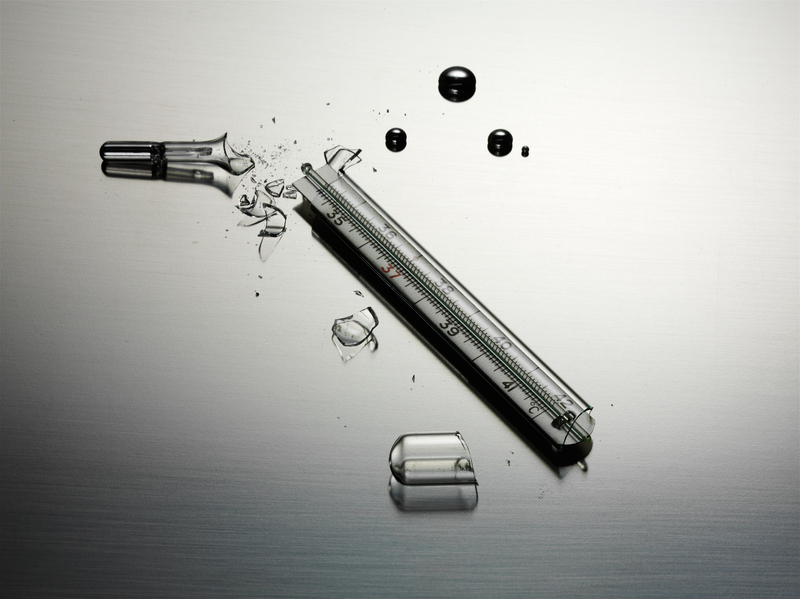How to Efficiently Dispose of Plant Pots
Introduction
Plant pots play a crucial role in gardening, horticulture, and home decor. However, over time, gardeners often accumulate an abundance of old, damaged, or unused plant containers. Disposing of these plant pots efficiently and responsibly is essential for sustainability, environmental care, and making space for new gardening ventures. In this comprehensive guide, we will explore how to efficiently dispose of plant pots, providing you with detailed, eco-conscious strategies that minimize waste and maximize benefit for you and your community.

Understanding the Problem with Plant Pot Disposal
Before discussing how to deal with unwanted plant containers, it's important to recognize the issues associated with their disposal:
- Environmental Impact: Many plant pots, especially those made from plastics, don't biodegrade and can linger in landfills for centuries.
- Contamination: Plant pots can carry soil, residues, or plant diseases that may affect recycling processes or future plantings.
- Volume: With millions of pots circulating each year, improper disposal contributes significantly to plastic pollution and clutter.
Therefore, disposing of plant pots efficiently means finding solutions that reduce waste, promote reuse, and prioritize recycling whenever possible.
Main Types of Plant Pots & Their Disposal Challenges
To efficiently dispose of your plant containers, first identify what materials you're dealing with. The most common plant pot types are:
- Plastic (rigid or flexible pots, usually black or colored)
- Terracotta and clay
- Ceramic
- Biodegradable or compostable pots (e.g. coir, peat, pulp)
- Metal or stone
Each material presents different challenges for recycling, reusing, or disposal:
Plastic Plant Pots
Plastic remains the dominant material in plant pot manufacturing. While lightweight and cost-effective, plastic pots are notorious for clogging recycling systems and harming wildlife.
Ceramic and Terracotta Pots
This type is more durable and often reusable, but ceramics can break and terracotta can crumble, making their efficient disposal less straightforward.
Biodegradable Pots
Made from natural fiber, these pots promise eco-friendliness but sometimes decompose inconsistently in home compost systems.
Metal and Stone Pots
These are typically robust and long-lasting but difficult to recycle in municipal systems and heavy to handle.
Best Methods to Efficiently Dispose of Plant Pots
1. Clean Before You Dispose
It's essential to clean plant pots before disposal. Leftover soil or fertilizers can contaminate recycling processes or harbor diseases.
- Remove all soil and plant material.
- Soak pots in a vinegar-water solution to disinfect.
- Allow them to dry thoroughly before further processing.
Tip: A clean pot is more attractive for reuse or donation and less likely to be rejected by recyclers.
2. Reuse Plant Pots in Creative Ways
Before throwing plant pots away, ask yourself: Can I reuse them in my home or garden? Creative reuse saves resources and can be fun!
- Use pots for starting seeds or propagating cuttings.
- Repurpose damaged containers for craft projects, storage, or garden art.
- Create a vertical garden with smaller pots.
- Organize hardware, small tools, or garden supplies in larger containers.
With a dash of imagination, your old plant pots can extend their lifespan significantly.
3. Return and Take-Back Schemes
Many plant nurseries, garden centers, and hardware stores now offer plant pot return programs:
- Check with local retailers about drop-off points for used pots.
- Inquire about initiatives that accept larger quantities or specific materials (commonly plastics #2 and #5).
- Some municipalities sponsor "take-back days" specifically for plant pot recycling or reuse.
Retailer-supported programs often guarantee that the pots will be reused or properly recycled, sparing you the landfill guilt!
4. Recycling Plant Pots the Right Way
Not all plastic plant pots are accepted by curbside recycling programs. To recycle pots efficiently:
- Identify the resin identification code (usually a #2, #5, or unmarked).
- Consult your local recycling authority or website to see which plastics are accepted and if they have dedicated collection bins for garden plastics.
- Ensure pots are clean and dry to avoid contamination.
- Stack similar types together and remove any metal wires or tags.
Important: Black plastic pots are often rejected by standard sorting machines. Seek out specialized recycling centers or retailer take-back programs for these items.
5. Donate Plant Pots to Community Groups
Community gardens, schools, and local gardening clubs are often delighted to accept donated plant containers:
- Contact nearby schools about using pots for lessons or student gardening projects.
- Reach out to horticultural societies who regularly seek pots for plant sales or propagation programs.
- Offer pots for free or at a low price on local social platforms, such as Facebook Marketplace, Freecycle, or Craigslist.
This strategy encourages pot reuse while supporting local green initiatives.
6. Compost or Mulch Biodegradable Pots
If you have fiber-based, compostable, or pulp pots, disposing of them is straightforward:
- Tear or shred the pot into small fragments. Smaller pieces speed up decomposition.
- Add them to your home compost heap, ensuring they're moist and evenly mixed with other green and brown materials.
- Alternatively, bury pots directly in the garden bed - as they break down, they improve soil texture.
Check packaging to ensure the pots are 100% biodegradable; some may contain small plastic linings or additives.
7. Terracotta, Ceramic, and Stone Pots: Repair or Repurpose
Ceramic and terracotta containers often crack or chip but can still serve a purpose:
- Use broken pot shards (crocks) to line the bottom of other plant pots for improved drainage.
- Reassemble larger fragments as a garden mosaic, stepping stones, or garden bed edging.
- Repurpose stone or intact ceramic pots as decorative features, bird baths, or even water features.
When disposal is necessary, check with local waste facilities if they accept inert, non-glazed pottery as rubble or aggregate.
Best Practices for Efficient Plant Pot Disposal
Understand Local Regulations
Recycling rules and collection options vary widely by location. Always verify local guidelines before dropping off pots or placing them in household waste.
Foster Community Sharing
Organize neighborhood pot swaps or group recycling efforts. By joining together, it's easier to collect enough pots to make a recycling trip worthwhile and to ensure that pots are reused rather than discarded.
Support Sustainability-Minded Retailers
- Patronize nurseries that use returnable plastic pots or biodegradable alternatives.
- Choose retailers who clearly label plastic types and actively participate in recycling partnerships.
Choose Alternatives to Traditional Plant Pots
When purchasing new containers, consider the long-term impact:
- Opt for biodegradable pots or containers made from recycled materials.
- Invest in high-quality, durable pots that will last for many planting cycles.
- Consider "potless" options such as direct seeding in garden beds or using natural materials for propagation.

Frequently Asked Questions About Plant Pot Disposal
Can I Put Plant Pots in the Curbside Recycling Bin?
It depends on your location and the type of plastic. Most municipal recycling doesn't accept plastic plant containers unless clearly marked and thoroughly cleaned. Check with your locality before recycling plant pots curbside.
Are All Biodegradable Pots Compostable?
No. While many fiber pots claim to be compostable, always check for hidden plastics or additives. Pots labeled "commercially compostable" may not break down in home compost bins.
What Should I Do With Broken Terracotta Pots?
Broken terracotta is ideal for garden drainage or as rustic mulch. Disposal in regular household waste is only recommended if you cannot find a reuse for the fragments.
Where Can I Donate Old Plant Pots?
Consider community gardens, school programs, horticulture societies, or advertise free plant pots on local online groups and forums.
Conclusion: Take Responsibility for Efficient Plant Pot Disposal
Plant pots are indispensable to gardening, yet they shouldn't burden our planet when they're no longer needed. By opting for efficient plant pot disposal methods -- cleaning, reusing, donating, or recycling -- you're making a commitment to both your local community and the environment.
Whenever possible, reduce your plant pot waste at its source by reusing pots where feasible and choosing sustainable alternatives with future disposal in mind. Remember that efficient plant pot disposal is not just about waste management, but about fostering a responsible gardening culture that values reuse, sustainability, and innovation.
With these practical disposal strategies, give your plant pots a second life or send them off in an environmentally-friendly way, making your green thumb even greener!